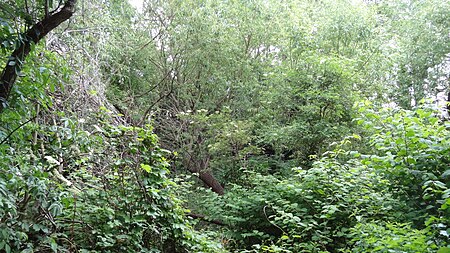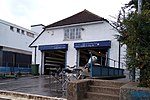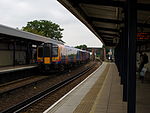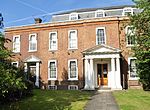Barnes Railway Bridge is a Grade II listed railway bridge in the London Borough of Richmond upon Thames and the London Borough of Hounslow. It crosses the River Thames in London in a northwest to southeast direction at Barnes. It carries the South Western Railway's Hounslow Loop Line, and lies between Barnes Bridge and Chiswick stations. It can also be crossed on foot, and is one of only three bridges in London to combine pedestrian and rail use; the others being Hungerford Bridge and Golden Jubilee Bridges and Fulham Railway Bridge.
The original bridge at this location was constructed during the late 1849 in accordance with a design produced by the civil engineer Joseph Locke; this structure, which consisted of two pairs of cast iron arch spans, bore a considerable resemblance to the original Richmond Railway Bridge, which was also designed by Locke. On 22 August 1849, the Barnes Bridge was opened to rail traffic. While Locke's incarnation of Barnes Bridge provided relatively trouble-free service, it has not seen use since the 1890s. During the latter decade of the nineteenth century, there was a scare regarding the suitability of cast iron bridges following the collapse of one such structure. As such, it was decided that a successor to the original Barnes Bridge should be constructed.
During the 1890s, a wider replacement bridge, which was designed by Edward Andrews, was constructed by Head Wrightson on behalf of the London & South Western Railway. This structure, which was built directly alongside its predecessor, comprises three spans of wrought iron bow string girders, which carries a pair of railway tracks across the river. A pedestrian walkway was also added to the bridge at this time. The original Locke span remains standing along the up-stream side of its replacement, but is not used by any traffic. During 1983, Barnes Bridge was given protection as a Grade II listed structure. In the 2010s, the Barnes Bridge has been temporarily closed to pedestrians during the annual Oxford and Cambridge Boat Race to avoid excessive crowding on the structure.











